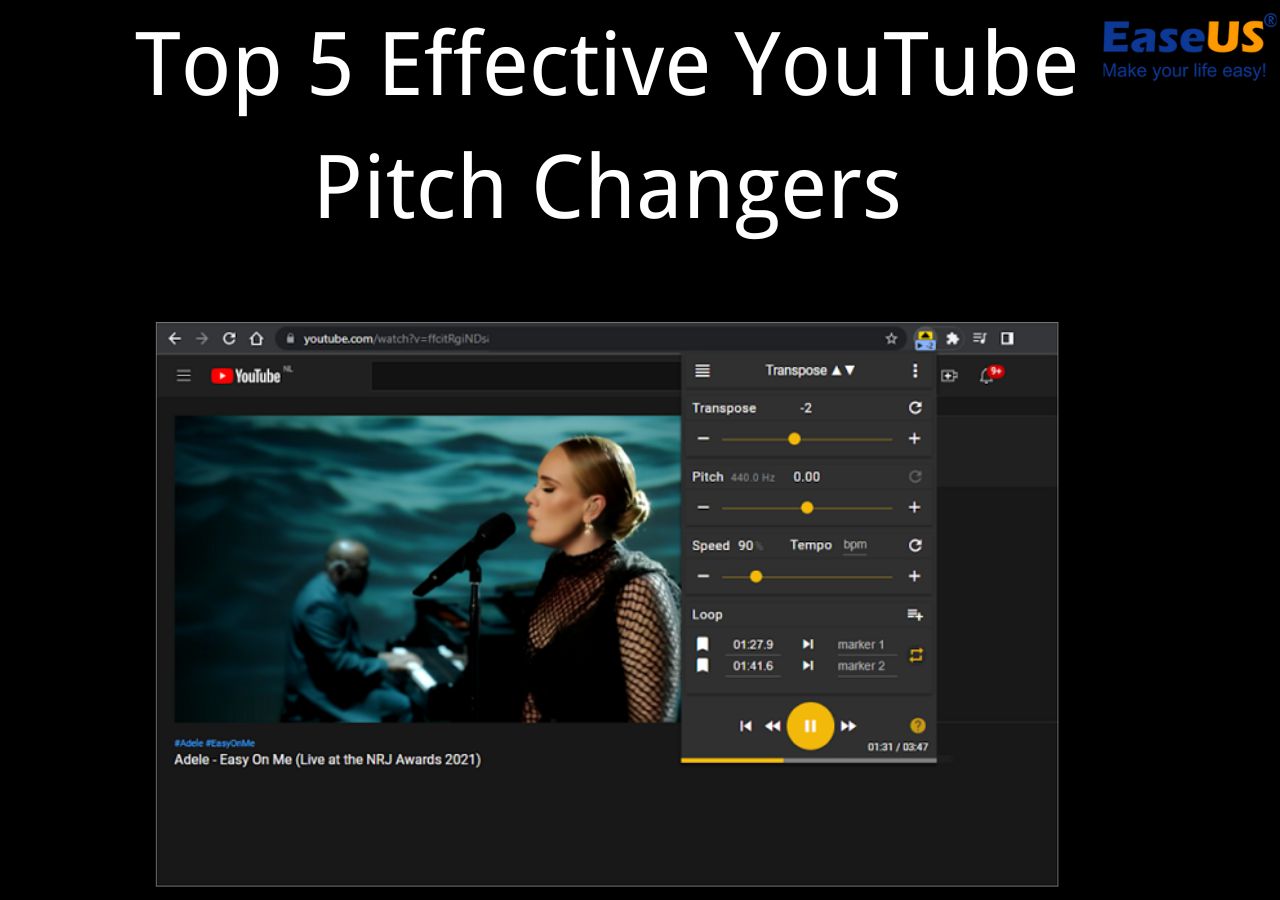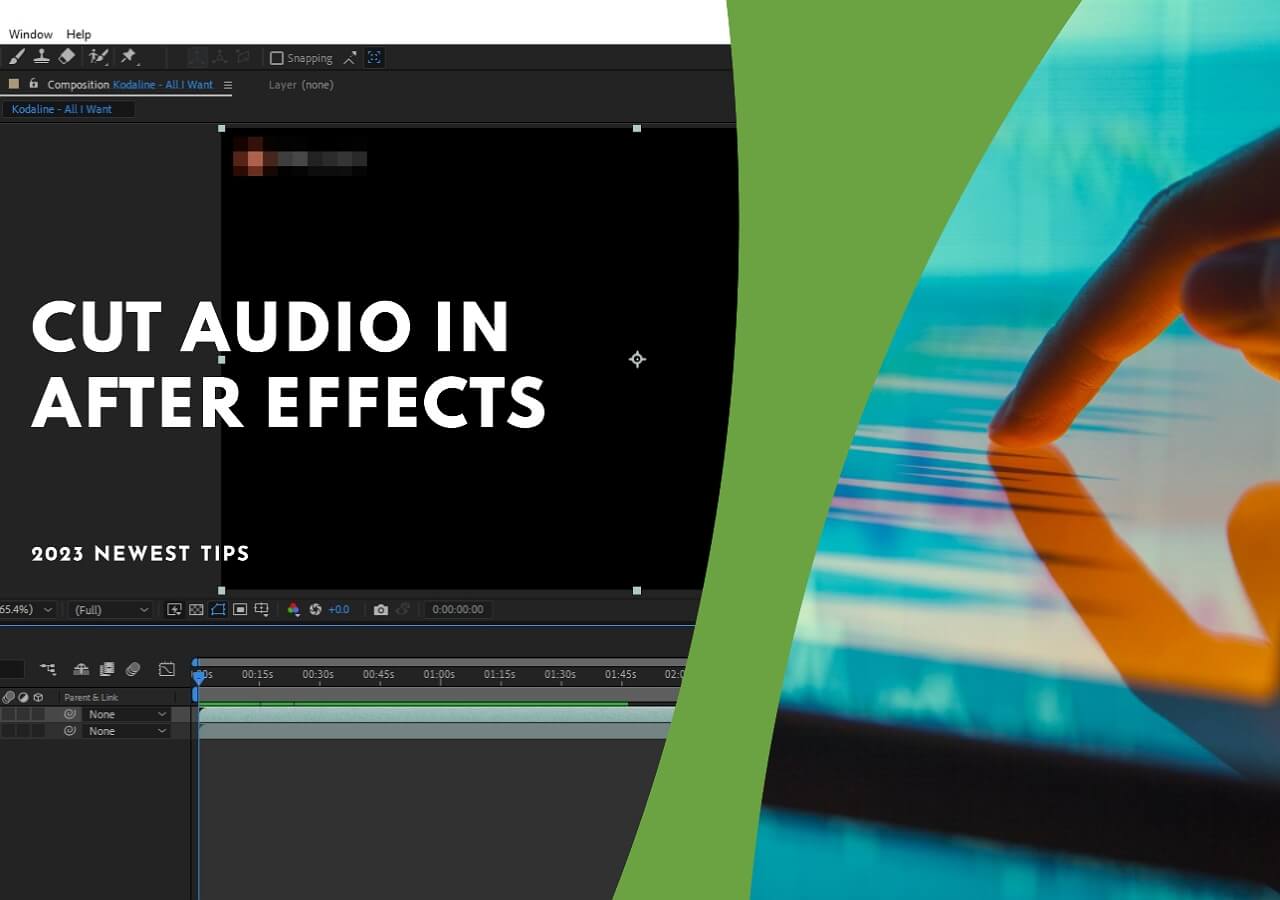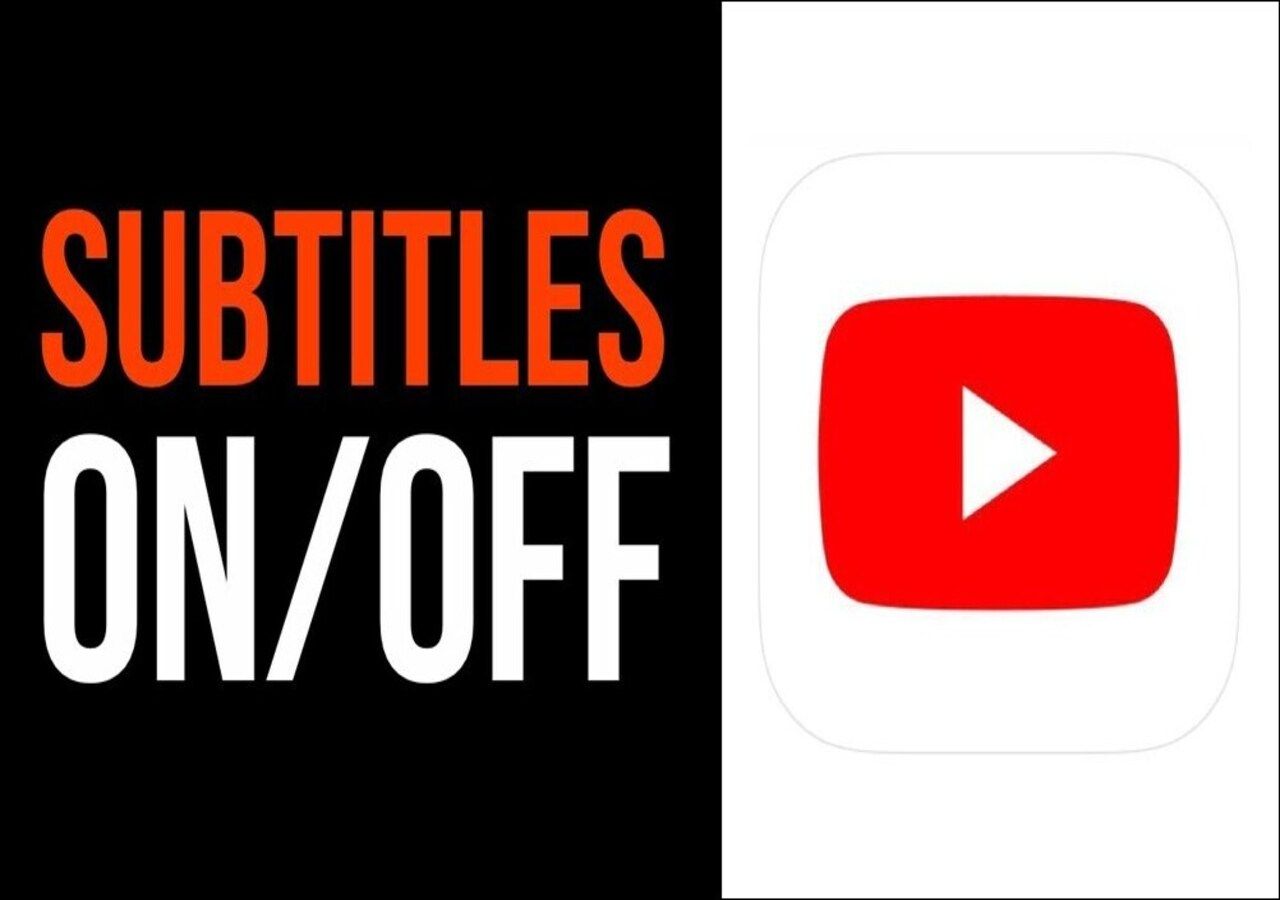-
![]()
Sofia Albert
Sofia has been involved with tech ever since she joined the EaseUS editor team in March 2011 and now she is a senior website editor. She is good at solving various issues, such as video downloading and recording.…Read full bio -
![]()
Melissa Lee
Melissa Lee is a sophisticated editor for EaseUS in tech blog writing. She is proficient in writing articles related to screen recording, voice changing, and PDF file editing. She also wrote blogs about data recovery, disk partitioning, data backup, etc.…Read full bio -
Jean has been working as a professional website editor for quite a long time. Her articles focus on topics of computer backup, data security tips, data recovery, and disk partitioning. Also, she writes many guides and tutorials on PC hardware & software troubleshooting. She keeps two lovely parrots and likes making vlogs of pets. With experience in video recording and video editing, she starts writing blogs on multimedia topics now.…Read full bio
-
![]()
Gorilla
Gorilla joined EaseUS in 2022. As a smartphone lover, she stays on top of Android unlocking skills and iOS troubleshooting tips. In addition, she also devotes herself to data recovery and transfer issues.…Read full bio -
![]()
Rel
Rel has always maintained a strong curiosity about the computer field and is committed to the research of the most efficient and practical computer problem solutions.…Read full bio -
![]()
Dawn Tang
Dawn Tang is a seasoned professional with a year-long record of crafting informative Backup & Recovery articles. Currently, she's channeling her expertise into the world of video editing software, embodying adaptability and a passion for mastering new digital domains.…Read full bio -
![]()
Sasha
Sasha is a girl who enjoys researching various electronic products and is dedicated to helping readers solve a wide range of technology-related issues. On EaseUS, she excels at providing readers with concise solutions in audio and video editing.…Read full bio
Content
Quick Answer
What Causes Clicks, Pops, Hiss, and Mouth Noise in Logic?
Fix Clicks and Pops Sound in Logic Pro X with Smack Attack
Reduce Mouth Noise from Vocal Recording in Logic Pro X Using the File Editor
Cut out Hiss from Audio in Logic Pro X Using Noise Gate
Remove Background Noise Online Easily
Wrapping up
How to Fix Clipped Audio in Logic Pro X FAQ
9946 Views |
6 min read
Quick Answer
▶️Step 1. Enable audio effects, then go to "Audio Units" > "Waves" > "Smack Attack (s)" > "Stereo."
▶️Step 2. Apply it to stereo out, click on "Clip," and the clicks and pops will stop.
Unwanted clicks, pops, hiss, and mouth noise can distract from the quality of your recordings in Logic Pro X. Whether you're working with vocals, instruments, or any type of audio, these imperfections can be frustrating. Fortunately, Logic Pro X offers several tools and techniques to clean up your tracks and achieve professional sound.
In this guide, we'll walk you through effective methods to reduce and eliminate these common audio issues.
- Fix Clicks and Pops Sound in Logic Pro X with Smack Attack
- Reduce Mouth Noise from Vocal Recording in Logic Pro X Using the File Editor
- Cut out Hiss from Audio in Logic Pro X Using Noise Gate
- Remove Background Noise Online Easily
What Causes Clicks, Pops, Hiss, and Mouth Noise in Logic?
Clicks and pops can result from a low buffer size that overloads your CPU, loud input signals causing clipping, sudden waveform edits without proper fades, or latency mismatches between your audio hardware and Logic during playback or recording.
Hiss comes from background noise, high gain settings amplifying the noise floor, or poor-quality equipment like microphones or cables.
Mouth noise is often caused by recording vocals too closely, a dry mouth, or over-compression that brings low-level sounds like lip smacks and breaths to the forefront.
To reduce these unwanted background noises, you can follow these tips:
Before recording:
- Set Proper Gain: Avoid clipping by keeping input levels below 0 dB.
- Control Your Environment: Record in a quiet space and minimize background noise.
- Use Quality Equipment: Invest in good mics, cables, and interfaces to reduce noise.
- Mic Positioning: Maintain proper mic distance (6-12 inches) to avoid mouth noise.
- Set Buffer Size: Use a proper buffer size to avoid clicks and pops.
After recording:
- Noise Reduction: Apply a noise gate, EQ, or noise reduction plugins to remove hiss and background noise.
- Apply Fades: Smooth out cuts with fades to prevent clicks and pops.
- Use a De-esser: Reduce sibilance and mouth noise in vocal tracks.
- Edit Unwanted Noises: Manually trim or comp out clicks, pops, or other distractions.
- Use Pitch Correction Sparingly: Avoid overusing pitch correction to prevent artifacts.
Fix Clicks and Pops Sound in Logic Pro X with Smack Attack
If you notice the stereo output is red, it's indicating that the audio is clipping, meaning the levels are too high. You can adjust individual track levels to reduce the volume, but this doesn't always solve the problem.
This is where the Smack Attack plugin comes in. It helps boost signals and make certain instruments stand out in the mix. While it can fix clipping issues, you'll need to balance lower-level instruments, like kick drums, to maintain a cohesive mix.
Step 1. Turn on the audio effects, and go to "Audio Units" > "Waves" > "Smack Attack (s)" > "Stereo."
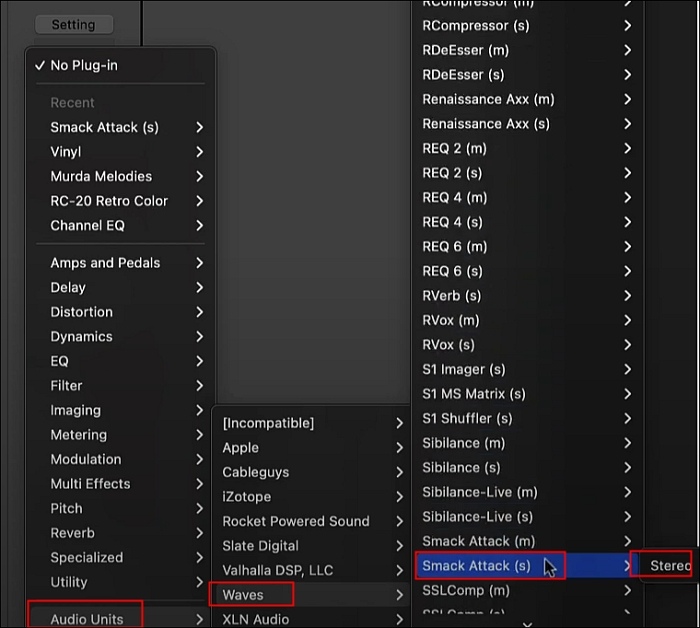
Step 2. Put this on stereo out and click on "Clip." And the clips and pops stop.

See also:
Reduce Mouth Noise from Vocal Recording in Logic Pro X Using the File Editor
Mouth noises are high-frequency sounds that become more noticeable on high-frequency playback systems and in compressed audio. If they occur before speaking, you can trim the start of the audio region. However, this won't work well if there's a high noise floor, as it may still be noticeable.
Step 1. Double-click the audio region to pull up the file editor. Select the File tab.

Step 2. Put your pointer over the top of the playhead and scrub your audio. Locate the clicks.

Step 3. Expand the waveform by toggling the pointer to the right. Or pinch in and out to zoom horizontally. Locate the specific crackles.

Step 4. Activate the pencil tool.

Make a copy of the audio region since the correction cannot be undone.

Draw a smooth line through the middle of all of those cycles using the pencil tool. If you are recording in stereo, scroll down and correct the other channel.

Step 5. Listen to the click part and check out the effect.
Cut out Hiss from Audio in Logic Pro X Using Noise Gate
A noise gate reduces unwanted noise, like hiss or hum when the audio signal is quiet. It allows sounds above a set threshold to pass through while muting anything below it. If the noise is separate from the main recording, a noise gate plugin can easily remove it. However, if the noise is mixed into the recording itself, a noise gate may not be the best solution.
Step 1. Click the empty insert to add a plugin.

Step 2. Go to "Dynamics" > "Noise Gate" > "Mono" / "Stereo."

Step 3. Insert the plugin on the track, and adjust the high and low cutoff frequencies to focus on the sounds you want to gate. Then, rotate the threshold knob to remove unwanted noise.
- Threshold: Reduces signals below this level.
- Hysteresis: Smooths gate operation by setting a difference between opening and closing levels.
- Attack: Controls how fast the gate opens when the signal passes the threshold.
- Hold: Sets how long the gate stays open after the signal drops.
- Release: Adjusts how fast the gate closes after the signal falls below the threshold.
- Characteristics: Choose Bandpass to allow or Bandstop to block certain frequencies.
- Monitor: Listen to the side-chain signal with high and low cut filters applied.
- High Cutoff: Sets the upper limit for the side-chain signal.
- Low Cutoff: Sets the lower limit for the side-chain signal.

Share these tips with other Logic users!
Remove Background Noise Online Easily
EaseUS Online Noise Remover cleans all sorts of background noise for audio and video files with AI. It eliminates unwanted noises automatically and easily without losing audio quality. It is web-based and requires no login.
This audio tool also removes vocals from a song, extracts instruments like piano, drum, bass, and guitar, changes pitch, volume, key of audio, and more. It also has an app available on Google Play and App Store.
Key Features
- Remove noise for audio and video.
- Support MP3, WAV, M4A, FLAC, AC3, MP4, and more formats.
- Support up to 350MB single file size.
- Multifunctional online audio tool without downloading.
Step 1. Visit the website and select the "Noise Reducer" option.
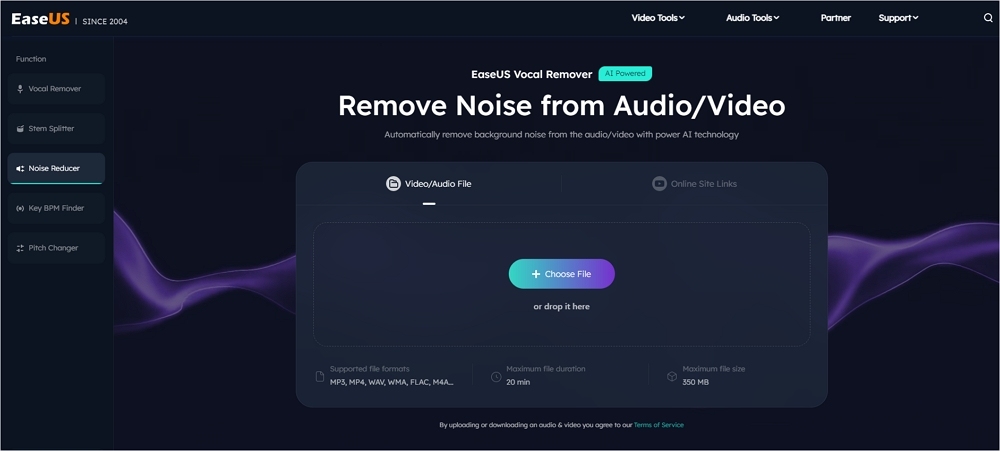
Step 2. Click "Choose File" or drag and drop the file in the area and wait for the AI analysis.
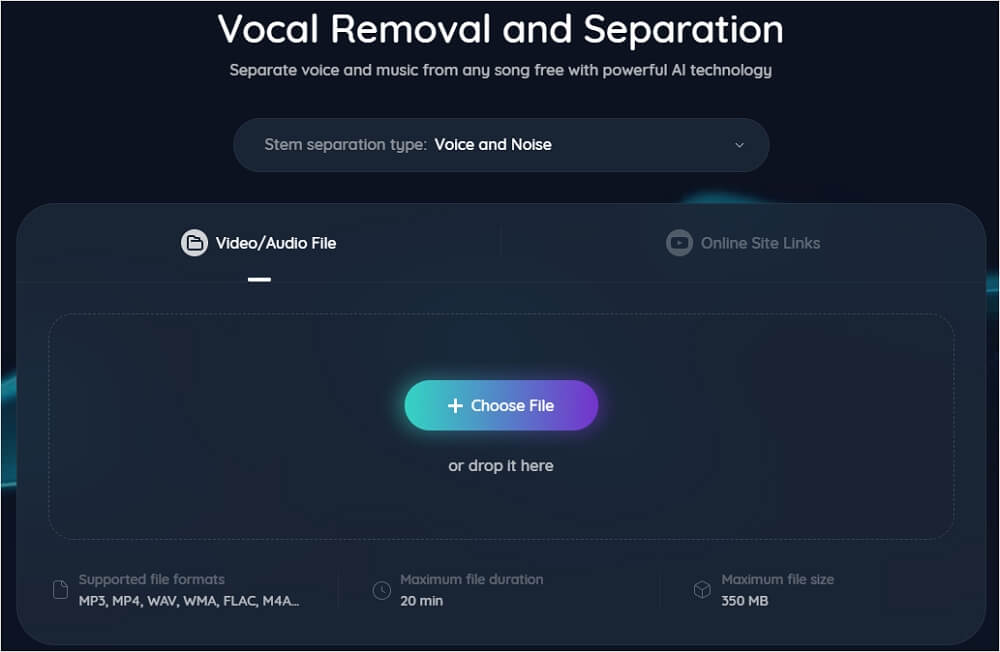
Step 3. Download the final work with noise removed.

Wrapping up
In conclusion, dealing with clicks, pops, hiss, and mouth noise in Logic Pro X can be challenging, but with the right techniques and tools, you can achieve cleaner, more professional recordings. By adjusting your buffer size and gain levels and using high-quality equipment, you can prevent many of these issues before they start. After recording, tools like noise gates, pencil tools, and plugins like Smack Attack can help remove unwanted sounds and improve audio quality.
If you want an easier alternative, EaseUS online noise remover eliminates the background noise for audio and video files at once using the advanced AI algorithm.
How to Fix Clipped Audio in Logic Pro X FAQ
1. How do I normalize a clip in Logic?
You can easily batch normalize audio in Logic.
- Shift + Click the regions you want to normalize in the arrangement window.
- At the top left (above track names), click "Functions" and choose "Normalize Region Gain."
- In the "Affect" dropdown, select 'Individual Regions' and set "Algorithm' to 'Peak."
- Enter your target level and press Enter before applying.
- Click "Apply" to normalize all selected regions.
- This is helpful when mixing to ensure all tracks start at the same level. A good starting point is setting regions to -10dB.
2. How to reduce peaks in Logic?
To reduce peaks in Logic:
- Check the samples using a waveform analyzer called s(M)exscope or Wave Observer.
- Click the blank below Input and select "Distortion" > "Bitcrusher" > "Stereo."
- Maximize the resolution value and minimize the drive. Experiment with the clip level.
- Drop down the Read values under "Stereo Out" and check out the effect.
3. How to cut audio in Logic Pro?
The scissors tool is great for quickly cutting multiple areas. You can also split regions by control-clicking a MIDI or audio region, selecting "Split," and choosing "Split at Playhead."

